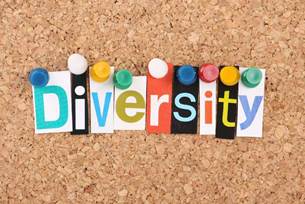Returning from The Great Resignation
Recent findings from the Pew Research Center uncovered that across 34 countries, a median of 94% of respondents think it is important for women in their country to have the same rights as men, with 74% saying it is very important. Yet, women are less optimistic than men that they will achieve gender equality. How can these two diametrically opposed trends exist in the same world at the same time? It’s the sad reality for women in the world and the workplace that while their talent abounds, opportunity does not.
The numbers simply do not lie. According to the World Economic Forum, it will now take 135.6 years to close the gender gap worldwide. Post-pandemic, there’s a dearth of women in leadership roles, estimated to be only 27 percent of all managerial positions. According to McKinsey, the gender-regressive reality of these trends might mean that global GDP growth will be $1 trillion lower in 2030; conversely, taking action to advance gender equality could add as much as $13 trillion to the global economy by the same year.
Taking action is exactly what employers of choice are doing. Whether you call it the Great Resignation or something else entirely, the impact of this shift has been stark. In the first year of the pandemic, 54 million women around the world left the workforce. The resulting talent shortages have knocked most organizations back on their heels. Not only are organizations are failing to meet their gender diversity goals; many have lost the compassionate leadership and peer learning that women bring to the workplace.
In my years of designing and executing programs that provide pathways to bring women back after a career break, I’ve observed several key trends. First, the linear career path is dead and that’s not specific to women. People’s careers increasingly include a series of off-ramps and on-ramps. The “S Curve” as a career management tool, popularized by Everett M. Rogers, describes the trajectory of people as they develop new areas of expertise. And when women are ready to return, many bring great underlying skills, intelligence and integrity—good DNA remains good DNA.
Women taking a career break – perhaps due to the conditions created by the pandemic but for other reasons as well – tend to downplay the skills they acquire during their time away from a traditional work environment. Running an online charity event that attracted 2,000 attendees necessitates strong project and time management skills, even if it doesn’t translate neatly on one’s resume or LinkedIn profile (that might be why the employment site recently added a Career Break feature.)
A second trend is that women re-entering the workforce have a fair amount of anxiety over the gaps in both their resumes and their skills. “How do I explain why I took a career break and what I did during it?” is a popularly asked question. It’s one of the reasons I wrote the book titled The Definitive Return-to-Work Playbook to provide them with practical exercises and access to returner success stories. Re-entry can be a redefining moment, one in which skills are found to be transferable and valued; often, in new jobs that might not have existed previously. This same anxiety can be significantly diminished and replaced with positive experiences when employers follow a cohort model that provides support and structure for the returners while building organizational diversity pipelines at scale.
There’s another aspect to creating pathways that support gender diversity. At reacHIRE, we call it the perfectionism syndrome. Both returners and employers are guilty of this condition, in which hiring managers reject candidates who don’t check every box on the job description and applicants who shy away from applying in the first place because they’re not a 100% match. This is particularly damaging to gender diversity programs because while companies say they want to be more diverse, they pursue perfect fit candidates – which means many good candidates are overlooked. Getting more women into the organization – and especially into leadership roles – means sourcing and recruiting differently. Extending opportunities into unrepresented talent pools might feel like a risk; however, nothing could be further from reality. Let’s look at a company that has put diversity – including gender – at its core:
Considered the number one company in the U.S. for diversity, the professional services firm Accenture makes inclusion, diversity and equality part of who they are and how they work. The company took an active stance early on to combat racism. To reinforce its commitment to gender diversity, Accenture revised its compensation structure to deliver 100% pay equity for women compared to men, in every county in which it operates. More than 300,000 women work at Accenture, representing 46% of its workforce. 50% of the board are women; 47% of all new hires are women; and 43% of revenue producing roles are held by women.
Accenture’s impressive results didn’t happen overnight. Every returnship journey starts with careful planning, partnerships and ongoing support across the organization. It is not limited to one team or department. It is a collective effort. Companies need to create engaging pathways to extend their employer brand to women returning to the workforce, especially given the deceleration of diversity achievement during the pandemic. After all, for returners, career breaks shouldn’t be career breakers.
- Improving Gender Diversity Hiring – by Addie Swartz - May 11, 2022


One thought on “Improving Gender Diversity Hiring – by Addie Swartz”